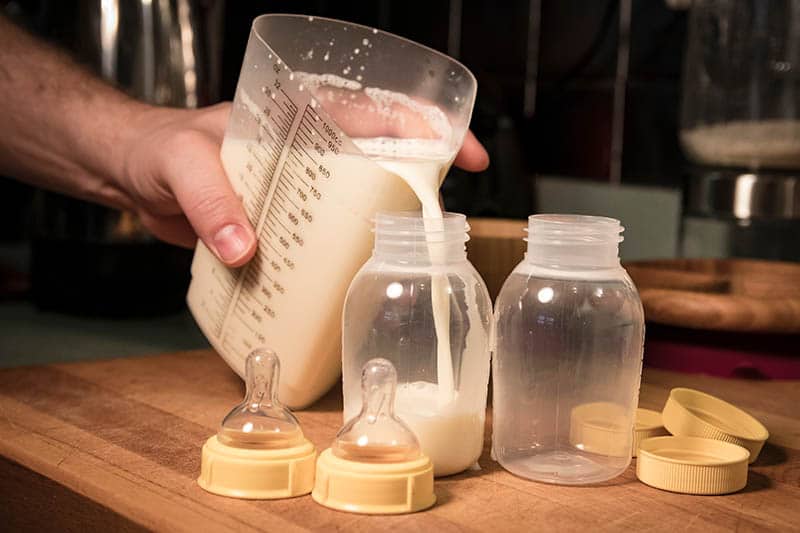If you’re wondering Can you mix formula and breastmilk? you have come to the right place.
Supplementing, or combining the mother’s milk with infant formula, is very common among moms who can’t produce enough milk for their baby or who need an additional source of nutrition for whatever reason.
Formula and milk can be mixed in various ways. You can opt for the more expensive ready-to-feed bottles that you would simply pour into the bottle with the milk and feed to your baby.
But you can also purchase cans of formula, mix the powder with water, and then add the mixture to the bottle of milk.
On the other hand, some doctors and lactation consultants recommend keeping formula feedings and breastfeeding separate so that your little one gets the full benefits from your milk, without letting anything go to waste.
When you’re done reading, I’m sure you will have all the info you need on how to mix breast milk and infant formula!
Can you mix formula with breast milk?
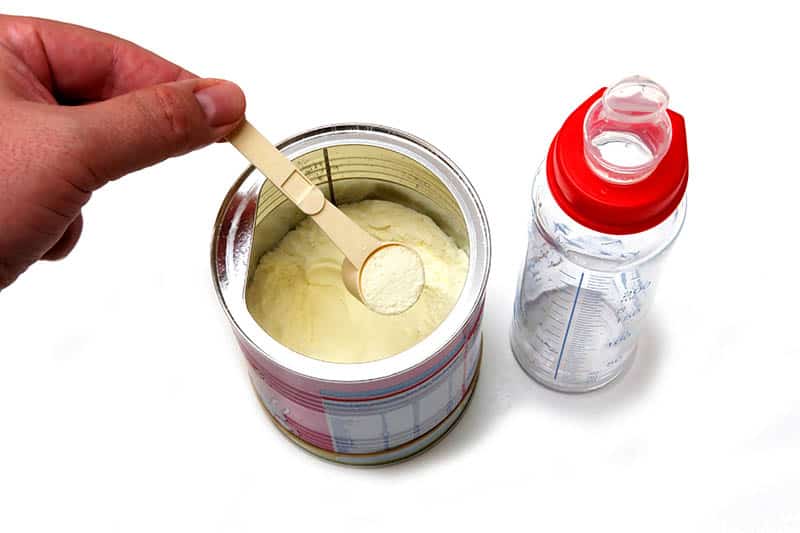
The answer to the above question is – yes, you absolutely can mix breast milk with baby formula. It’s also known as supplementing, and many parents do it for different reasons.
In short, there are three ways of mixing formula and breast milk.
One is to mix a bottle of ready-to-feed formula with breast milk. The second is to mix infant formula in powder form and then add it to a bottle of your milk. And the third option is to keep formula feedings separate from your nursing sessions.
Here is a more detailed overview.
1. Mixing with a ready-to-feed bottle of formula
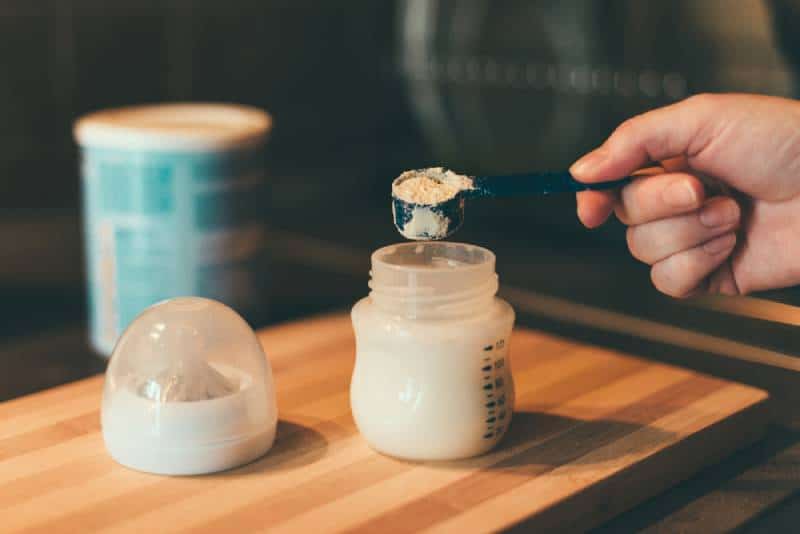
If you are unfamiliar with the world of baby formula and how to mix it, starting with a bottle of ready-to-feed formula is the easiest way to supplement breast milk. That’s because it already comes as a pre-mixed liquid formula and you can easily pour it into a bottle with your breast milk.
Many of these formula bottles are available in packs of 24, so it won’t be hard to get started.
2. Mixing with powdered or concentrated liquid infant formula
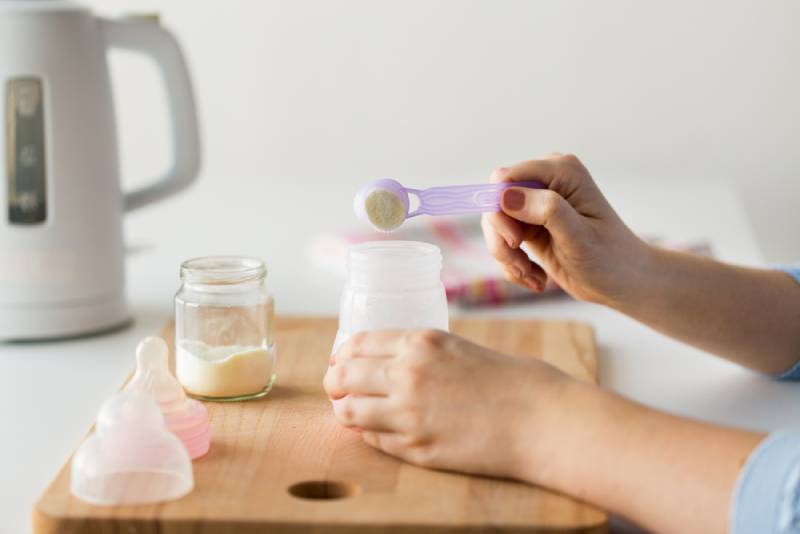
Concentrated liquid or powdered formula is trickier to prepare because you need to mix it with water before giving it to your little one. You should always follow the instructions on the container, ensuring that you add the correct amount of water and formula.
If the water in your area is safe to drink from the tap, then you can use it to mix the formula after boiling it and leaving it to cool for half an hour. However, if you’re not 100 percent sure, it’s better to purchase clean bottled water at the store.
Remember: Always mix the formula with water and then mix it with your milk; never add it directly to the milk. This is because infant formula was made to be diluted specifically with water, and adding it to human milk could lead to an imbalance in nutritional value.
3. Keeping formula feedings and breastfeeding separate
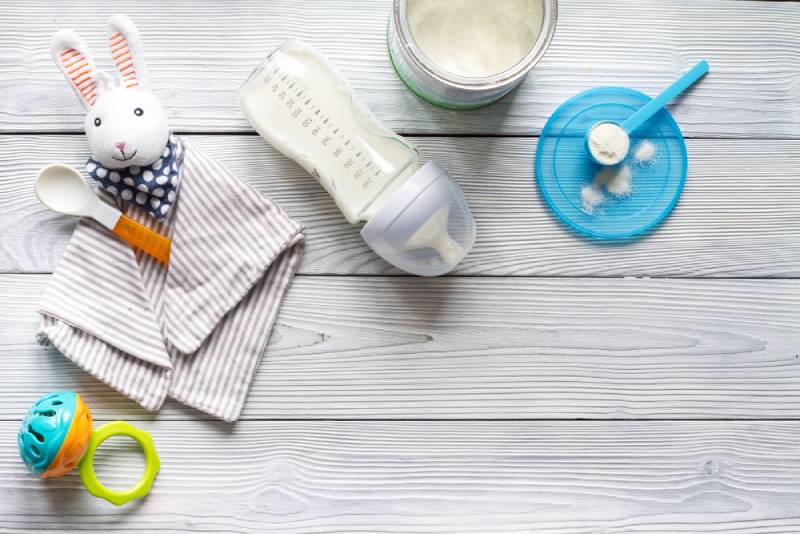
The third way of mixing formula feeds and breast milk is to alternate between the two during the day but not physically mix the liquids in a bottle.
Some moms prefer this method because they can be sure that their baby is getting enough breast milk and then add formula as needed. Combination feedings such as these can motivate you to keep breastfeeding, which maintains your breast milk supply, while still providing your munchkin with enough nutrition to grow.
La Leche League even recommends breastfeeding your baby whenever possible, and bottle feeding them formula separately to avoid any of your liquid gold from going to waste in case your munchkin doesn’t finish her bottle. And no matter the amount of breast milk you produce, you can be certain your baby will drink it.
When can you mix formula and breastmilk?
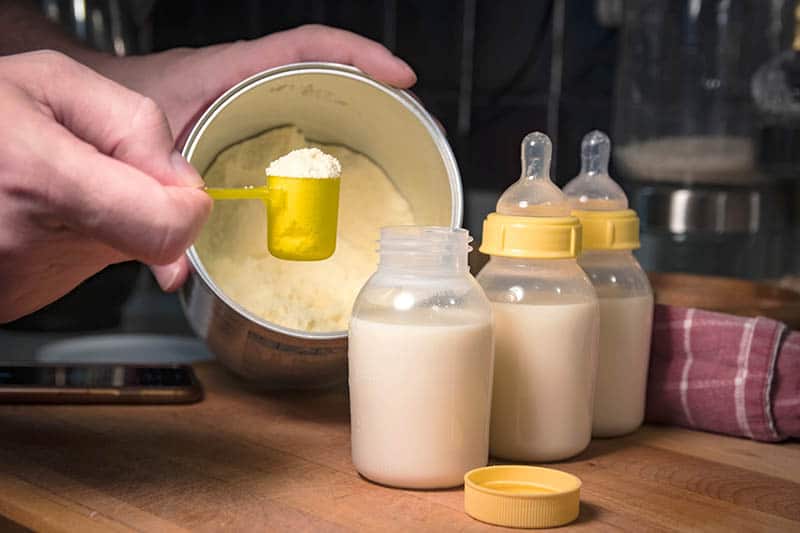
There are different reasons a mom would want to supplement her breastfeeding sessions with a certain amount of formula, with one of the main ones being a low milk supply.
Before giving birth, lots of moms have high hopes that they will practice exclusive breastfeeding for as long as possible. And for some, everything goes according to plan. But in many cases, low milk production becomes a serious problem, either as a result of poor latching, mastitis, or another issue. In cases like these, supplementing becomes a necessity.
Although you might be disappointed that your breastfed baby will also need formula, try to look at it from the bright side – you will still be giving your little one your milk when possible, so it’s not as if you’re giving it up completely.
If you’re worried that your low milk supply is affecting your baby’s growth, talk to your pediatrician whether it’s time to start combination feedings. In the meantime, you can work on improving your supply with lactogenic foods, for example. Once your production is back to normal, you can stop mixing formula milk with your own.
Another reason you would want to supplement with formula is to get more sleep.
It’s no secret that having a baby puts a large dent in the amount of sleep you get every night. But exclusive breastfeeding makes sleep even more elusive since your partner can’t step in for a bottle feed every now and then.
Baby formula can be a lifesaver for breastfeeding moms because a baby needs more time to digest it, keeping her full and asleep for a longer period of time. So, you can catch up on some rest and allow your partner to do a night-time session.
I understand that supplementing with formula in order for you to sleep more might bring on difficult feelings of mommy guilt. This is normal and expected. But you should realize that exhaustion, day in and day out, can prove to be dangerous for both you and your baby, and it’s simply not worth it.
Finally, a mother’s maternity leave coming to an end is another big reason many new moms opt for formula supplementation. Sometimes it’s difficult to know when to start pumping to build up a milk stash, and if you’re already having trouble with not producing much breast milk, this can seem nearly impossible.
In this instance, mixing prepared formula with expressed breastmilk for your baby to drink while you’re at work is a suitable alternative. In addition, you can talk to a board-certified lactation consultant for some advice on how to prepare for going back to work.
Useful tips for mixing breast milk and formula for bottle feeding

Unless you already have a few years of parenting under your belt and had experience with a formula-fed baby before, you’re going to need some advice on how to mix formula and human milk.
But we shouldn’t forget that bottle feeds are an entirely new terrain to exclusively breastfed babies, so here are a couple of tips to make the transition easier.
- When bottle feeding your baby, make sure to practice pace feeding so that it resembles breastfeeding as much as possible and to prevent nipple confusion;
- Always go for the smallest nipple sizes that have a slower flow;
- Use a bottle warmer or a pot of warm water to bring the milk to room temperature;
- Mix an even ratio of milk to formula;
- Check the “best before” date on the can to see that the formula has not gone bad;
- When mixing the formula and water, make sure to shake the bottle well for at least 15 seconds and double-check for clumps;
- Follow the precise instructions on the can and use only the scoop provided to measure the powder;
- After adding the milk to the prepared formula, shake the bottle again.
Which formula should I pick for my baby?
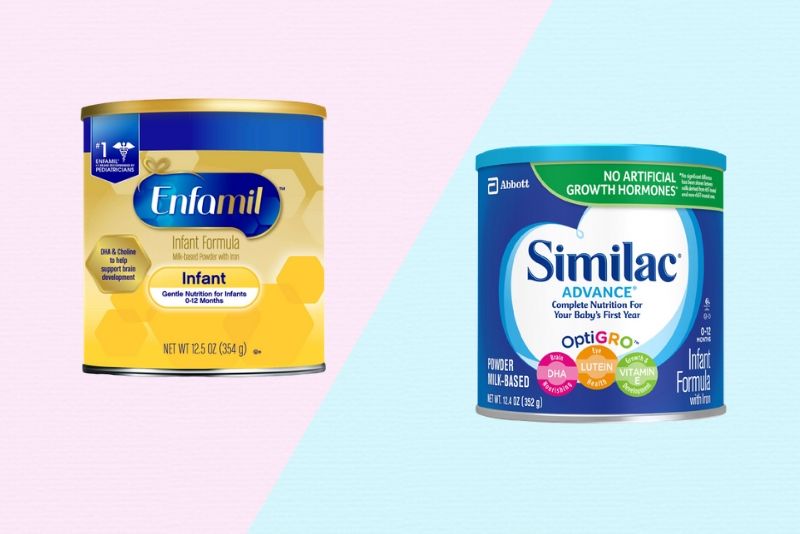
Now that you’ve gotten the answer to Can you mix breastmilk and formula? it’s time to see which formula you should pick.
For a mother who’s planned on exclusively breastfeeding, the world of baby formulas can seem daunting, especially when you get into all the different formulations. Worry not – all baby formulas are safe to use and you don’t need to purchase one that was specifically made with supplementation in mind.
That being said, take into account your baby’s digestive issues (or lack thereof). For example, if she tends to get gassy or spits up a lot, you can give special formulas for reflux a try since they’re made for sensitive tummies. Similac Sensitive is another popular choice for formula-fed babies that struggle with gassiness or reflux.
Enfamil also belongs to the group of trusted baby formula brands, and they are known for their sensitive formulations and ingredients that used to be found only in the mother’s milk.
Final thoughts
Although the American Academy of Pediatrics recommends that moms breastfeed exclusively for at least 6 months, the reality is much different. Medical problems, personal commitments, or latch issues are just a few out of the many reasons why a mother might need to supplement her milk with baby formula.
Thankfully, if you’re wondering if you can mix formula and breastmilk, the answer is affirmative. Not only can you mix them, but you can also do it in different ways, either by using the ready-made bottles or mixing the formula yourself and then adding it to your milk.
Remember that you don’t have to mix the two to successfully supplement. You can simply offer a bottle with formula to replace one or more feedings during the day and continue nursing as you did before.
Most importantly, don’t feel guilty that you need to supplement with formula. Try to look at it as a handy tool that will help you keep nursing your little one for as long as possible.
References:
“Breastfeeding” published by the American Academy of Pediatrics on the Healthy Children website. Accessed August 26, 2020.
“Mixing Milk” published by the La Leche League International on the La Leche League International website. Accessed August 26, 2020.
READ NEXT: All You Need To Know About Goat Milk Formula For Your Baby
Like this post? Please share or pin it for later. You can also stay in the loop and follow us on Facebook, Instagram and Pinterest.

This post contains affiliate links. Please see our full disclosure for more info.

